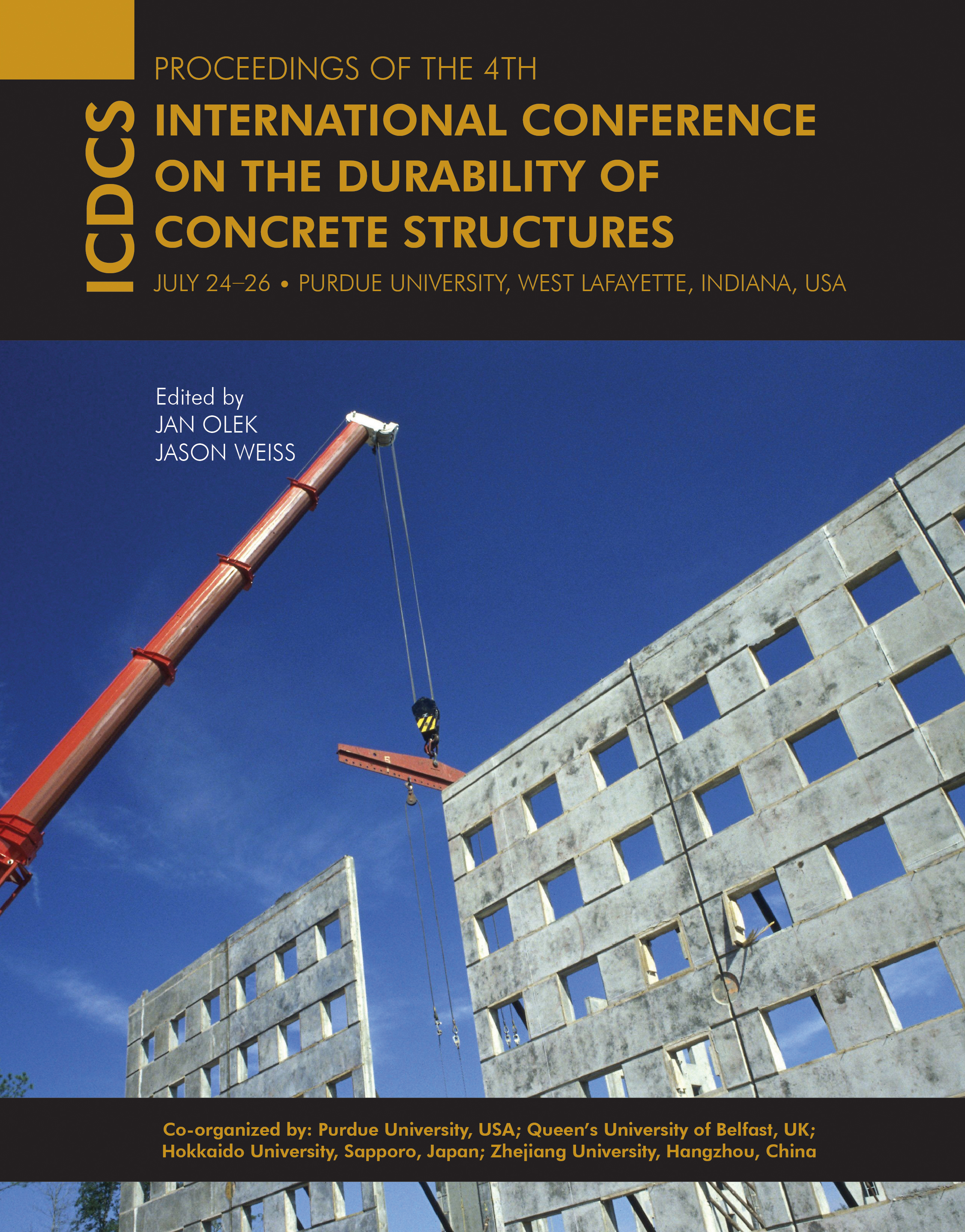Abstract
Cracking of concrete, which may be induced by several mechanisms, such as shrinkage, thermal effect, and loading, plays an important role in the deterioration of reinforced concrete structures because they provide additional pathways for water and aggressive agents, for example, chlorides, to penetrate into concrete. To well understand the transport properties of cracked/damaged concrete is essential for predicting its long-term durability. In general, water acts as the medium for agents to move into concrete, and water penetration by capillary absorption is more common for the real concrete structures since concrete is rarely saturated. As a result, absorption of water is regarded as the dominant factor for the ingress of aggressive substances. This article presents an experimental investigation on capillary absorption of concrete after being subjected to various loading patterns and levels. The sorptivity is chosen as a parameter to describe the rate of water moving into concrete since it can characterize the tendency of cementitious material to absorb and transmit water by capillary mechanism. A series of water absorption experiments were conducted on the concrete samples after they were subjected to uniaxial compressive or tensile loading. Three load levels, 70, 80, and 90%, of the corresponding compression and tension loading capacity were considered. An improved gravimetrical test equipment was used to measure the cumulative water content absorbed by concrete at the given time of exposure. The results show that mechanical loading, compression, or tension, has an important influence on water absorption property of concrete. The rate of capillary absorption of loading-damaged concrete can be raised up to two times of sound concrete samples for the ranges of load level studied.
DOI
10.5703/1288284315402
Included in
Experimental Study on Water Absorption by Concrete Damaged by Uniaxial Loading
Cracking of concrete, which may be induced by several mechanisms, such as shrinkage, thermal effect, and loading, plays an important role in the deterioration of reinforced concrete structures because they provide additional pathways for water and aggressive agents, for example, chlorides, to penetrate into concrete. To well understand the transport properties of cracked/damaged concrete is essential for predicting its long-term durability. In general, water acts as the medium for agents to move into concrete, and water penetration by capillary absorption is more common for the real concrete structures since concrete is rarely saturated. As a result, absorption of water is regarded as the dominant factor for the ingress of aggressive substances. This article presents an experimental investigation on capillary absorption of concrete after being subjected to various loading patterns and levels. The sorptivity is chosen as a parameter to describe the rate of water moving into concrete since it can characterize the tendency of cementitious material to absorb and transmit water by capillary mechanism. A series of water absorption experiments were conducted on the concrete samples after they were subjected to uniaxial compressive or tensile loading. Three load levels, 70, 80, and 90%, of the corresponding compression and tension loading capacity were considered. An improved gravimetrical test equipment was used to measure the cumulative water content absorbed by concrete at the given time of exposure. The results show that mechanical loading, compression, or tension, has an important influence on water absorption property of concrete. The rate of capillary absorption of loading-damaged concrete can be raised up to two times of sound concrete samples for the ranges of load level studied.





